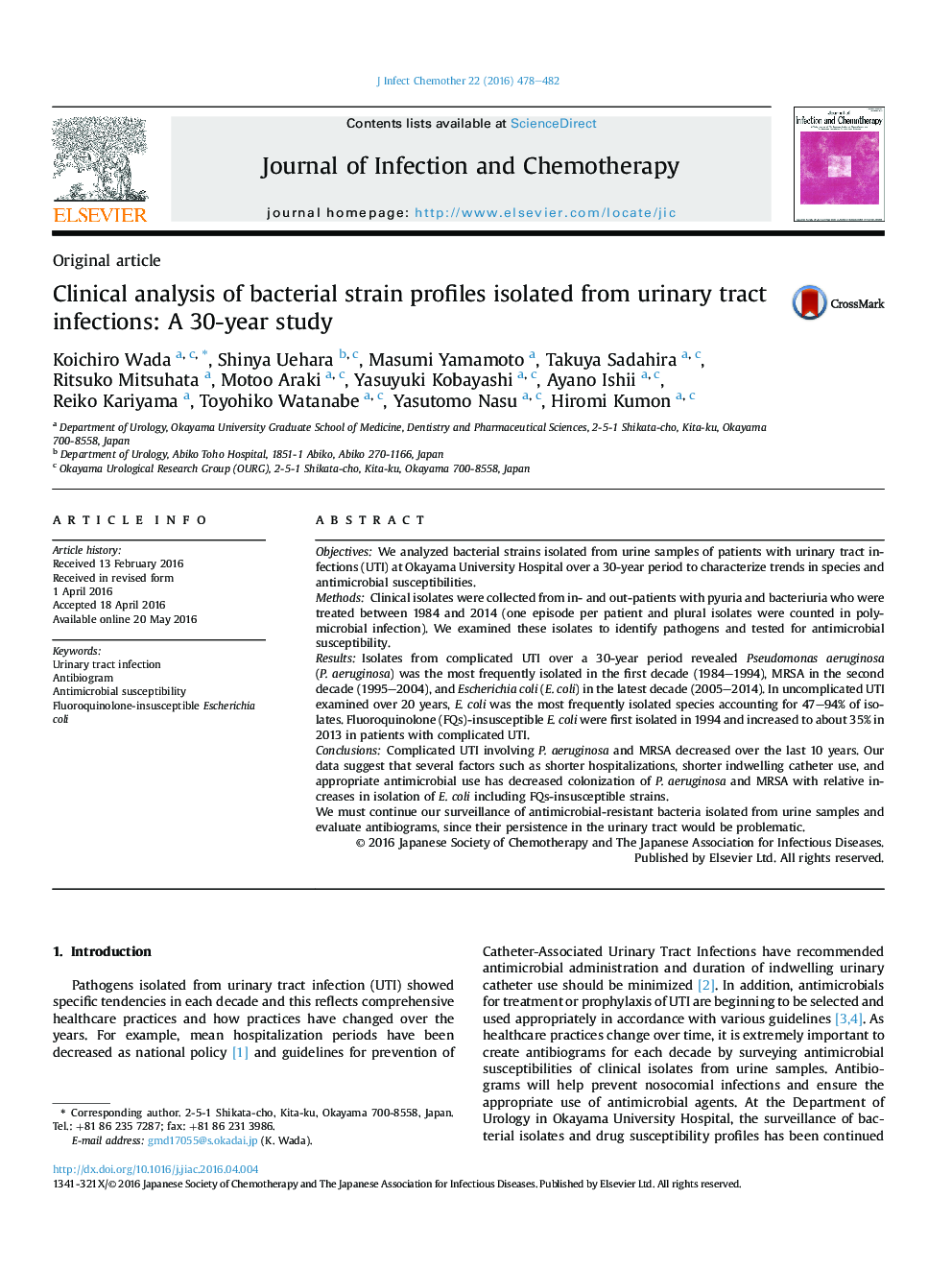| Article ID | Journal | Published Year | Pages | File Type |
|---|---|---|---|---|
| 3376643 | Journal of Infection and Chemotherapy | 2016 | 5 Pages |
ObjectivesWe analyzed bacterial strains isolated from urine samples of patients with urinary tract infections (UTI) at Okayama University Hospital over a 30-year period to characterize trends in species and antimicrobial susceptibilities.MethodsClinical isolates were collected from in- and out-patients with pyuria and bacteriuria who were treated between 1984 and 2014 (one episode per patient and plural isolates were counted in polymicrobial infection). We examined these isolates to identify pathogens and tested for antimicrobial susceptibility.ResultsIsolates from complicated UTI over a 30-year period revealed Pseudomonas aeruginosa (P. aeruginosa) was the most frequently isolated in the first decade (1984–1994), MRSA in the second decade (1995–2004), and Escherichia coli (E. coli) in the latest decade (2005–2014). In uncomplicated UTI examined over 20 years, E. coli was the most frequently isolated species accounting for 47–94% of isolates. Fluoroquinolone (FQs)-insusceptible E. coli were first isolated in 1994 and increased to about 35% in 2013 in patients with complicated UTI.ConclusionsComplicated UTI involving P. aeruginosa and MRSA decreased over the last 10 years. Our data suggest that several factors such as shorter hospitalizations, shorter indwelling catheter use, and appropriate antimicrobial use has decreased colonization of P. aeruginosa and MRSA with relative increases in isolation of E. coli including FQs-insusceptible strains.We must continue our surveillance of antimicrobial-resistant bacteria isolated from urine samples and evaluate antibiograms, since their persistence in the urinary tract would be problematic.
